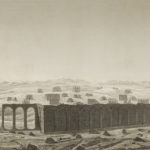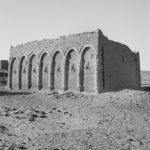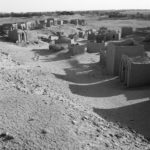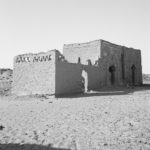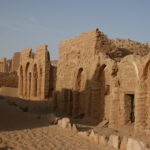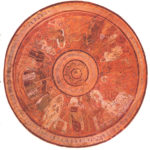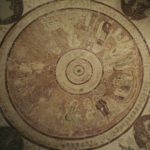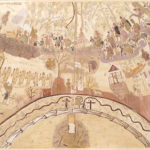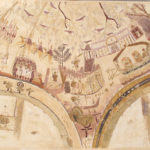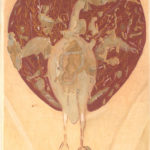AL-BAǦAWĀT
| Arabic | جبانة البجوات |
| English | Al-Bagawat | Bagawat | al-Qabwat |
| French | Bagawât | el-Bagaouat | el-Bagawât | el-Baqawat | Gabâouet | Ghabaouet |
| DEChriM ID | 15 |
| Trismegistos GeoID | 2739 |
| Pleiades ID | 776156 | PAThs ID | 115 |
| Ancient name | - |
| Modern name | al-Baǧawāt |
| Latitude | 25.483968 |
| Longitude | 30.554502 |
| Date from | 275 |
| Date to | 525 |
| Typology | Cemetery |
| Dating criteria | Radiocarbon dating (unpublished), inscriptions and graffiti (Greek, Coptic and Arabic; Wagner 1987; Roquet, Ghica in press; Ghica 2013), coins (Hauser 1932: 40; Winlock 1941: 48, n. 11) and glass (Hill, Nenna 2003). The little funerary material published has not been strictly speaking dated. The construction of the mausolea has been dated by Cipriano 2008 on stylistic criteria. Except the Coptic and Arabic graffiti, virtually all the dated material belongs to a 4th c. horizon. No known datable material from the necropolis supports a date in the 3rd c. The span indicated here (275-525) is theoretical and maximal. |
| Description | The necropolis of al-Baǧawāt, located on the Ǧabal al-Ṭayr plateau, is a cemetery of considerable proportions. Spread over an area roughly 500 by 200 meters, there are some 263 chapels extant and an abundance of pit burials (Lythgoe 1908b: 203; Fakhry 1951: 9). Excavations of the cemetery began in 1909, led by the Metropolitan Museum of Art (MMA) under H. E. Winlock, following on from initial fieldwork initiated in 1908, which investigated select areas of ʿAyn al-Ṭurba and Hibis Temple, both of which are located a few hundred meters south of the cemetery. These expeditions were said to have occurred annually until 1914, when the First World War broke out. Investigations commenced again in 1926, but only lasted one season. Excavations resumed again in 1931 under Walter Hauser, which similarly only lasted a single season. Hauser published the findings from 1931 the following year, which is one of the very limited number of publications from these early investigations. The cemetery is understood to have originally served a predominantly pagan community, perhaps some time in the third century, before being modified to suit a Christian population (Hauser 1932: 50; Fakhry 1951: 2). This is particularly evident in relation to the largest structure, that of a triple-naved church denoted mausoleum no. 180 (Fakhry 1951: 9; Hauser 1932: 40). This church was originally a ‘pagan’ mausoleum that subsequently underwent a number of architectural modifications in order to create a more appropriate space of worship for the community (Grossmann 1989: 1899; Ghica 2012: 221). While this is the only church in the necropolis, a number of the chapels contain apses and appear to have been places where funerary rites were conducted (Fakhry 1951: 9). The significance of the site derives from its size and its incredible state of preservation. Both of these factors provide great insight into developments in early Christian architecture and art (Ghica 2012: 221). Alongside the preservation of architectural remains, a number of extraordinary paintings have been preserved; of note are the works located in the “Chapel of Peace” and the “Chapel of Exodus”, so called because of motifs included in the artworks (Lythgoe 1908a: 86; Lythgoe 1908b: 206; Wagner 1987: 362). The “Chapel of Exodus”, chapel no. 30, belongs to the oldest architectural type and was considered by Fakhry to be one of the earliest chapels in the necropolis, dating to the first half of the fourth century (Fakhry 1951: 39). Aptly named, the scenes depicted include representations of the story of Exodus in the Old testament. The “Chapel of Peace”, chapel no. 80, is located in the southern end of the necropolis. Again, this chapel contains depictions of biblical scenes, realised in a distinctly more skilled hand (Wilkinson 1928: 30; Fakhry 1951: 67). The preservation of these works is particularly useful in relation to understanding the developments in iconographic motifs in early Christian art (Roquet 1976: 34). These unique artworks are accompanied by a great deal of graffiti and dipinti of visitors as well as ‘original’ texts, the latter of which include a number of liturgical fragments. Surprisingly, it was not until 1976 that a systematic study of these graffiti was first undertaken, with the Coptic texts being studied by G. Roquet and V. Ghica (Roquet, Ghica in press), and the Greek ones being published by Guy Wagner (Roquet 1976; Wagner 1987: 62-76). The information provided by this body of texts is remarkably illuminating, with some authors even including the month and date of their visit (Roquet 1976: 28, 30). Additionally, we are able to speculate about the chronology of a number of the chapels based on the name of an artist who signed his work after completion (Roquet 1976: 31; Bag. 31.92). The proximity and similarities of material findings to those from ʿAyn al-Ṭurba, an area of the ancient city of Hibis, indicate that the necropolis of al-Baǧawāt and ʿAyn al-Ṭurba were, at least partly, contemporaneous, with al-Baǧawāt serving as the main burial ground for the inhabitants (Hauser 1932: 38). This material includes an abundance of unique glass fragments, the documentation of which was first reappraised in 1989 by Marsha Hill (Hill 1989). A number of glass types found at ʿAyn al-Ṭurba date from the third to fourth centuries, with a selection of other glass finds corresponding typologically to that from one of the funerary chapels at al-Baǧawāt, the find spot of which is considered a closed context, and has been dated to the mid 4th to early 5th centuries (Hill & Nenna 2003: 88, 91). Viewing all of this material in conjunction strongly attests to the presence of a wealthy Christian community as early as the first third of the fourth century (Bagnall & Tallet 2015: 176). |
| Archaeological research | The first excavatory work was initiated in 1907 by the Metropolitan Museum of Art (MMA), under the directorship of H. E. Winlock. This work was conducted annually until 1910 when an epidemic of malaria brought excavation work in the oasis to a halt for some 20 years, though A. Fakhry mentions that some members of the team continued to visit Kharga annually until the outbreak of the First World War (Fakhry 1951: 5). Official activity of the MMA was resumed in 1926 until 1931, under the directorship of W. Hauser (Kajitani 2006: 95-96, n. 3). A. Fakhry published a monograph in 1951 in an attempt to garner the attention of international scholars so more thorough work could be carried out on the seemingly ignored site, though to little avail. Systematic investigation of the Coptic graffiti began in 1976, undertaken by Gérard Roquet, with Guy Wagner publishing the Greek graffiti in 1987. Additional epigraphic and topographic fieldwork was carried out by Victor Ghica in 2004, 2006, 2007, 2008 and 2009. A volume comprising the edition of the Coptic graffiti is awaiting publication, co-authored by Gérard Roquet and Victor Ghica. In the 1980s, the local inspectorate carried out several field seasons geared towards the clearing of pit graves located in two areas of the cemetery: in the west, between A. Fakhry's rest house and the mausoleum no. 25, to the west, and the “Chapel of Peace” (no. 80), to the north; in the north, to the northeast of the “Chapel of Exodus” (no. 30). DEChriM conducted a brief season of fieldwork in October/November 2021, centred on documenting the Christian decoration of the chapels. |
• Bagnall, R. and G. Tallet. 2015. “Ostraka from Hibis in the Metropolitan Museum of Art and the Archaeology of the City of Hibis.” Zeitschrift für Papyrologie und Epigraphik 196: 175-198.
• Beadnell, H. J. L. 1909. An Egyptian Oasis. An Account of he Oasis of Kharga in the Libyan Desert, with Special Reference to its History, Physical Geography, and Water Supply, p. 103-105. London: J. Murray.
• de Bock, W. 1901. Matériaux pour servir à I'archéologie de I'Egypte chrétienne, 7-33. Saint Petersberg: Eugéne Thiele.
• Brugsch, H.K. 1878. Reise nach der grossen Oase El-Khargeh, in der libyschen Wüste, p. 58-60, pl. VI-VII. Leipzig: J. C. Hinrichs’sche Buchhandlug.
• Cailliaud, F. 1821. Voyage à l’oasis de thébes et dans les déserts situés à l’orient et à l’occident de la thébaide fait pendant les années 1815, 1816, 1817 et 1818, p. 25-27, 29, 89, 93, 96, 113, pls. XVI, XXII, 2, 3, XXIII, 3-6, 9-11. Paris: M. Jomard.
• Cailliaud, F. 1823. Voyage à Méroé au fleuve Blanc, au delà di Fâzoql, dans le midi du royaume de Sennâr, à Syouah et dans cinq autres oasis, fait dans les années 1819, 1820, 1821 et 1822, vol. II, pl. XXXIII and pl. XXXIV. Paris: M. Jomard.
• Cipriano, G. 2008. El-Bagawat: Un cimitero paleocristiano nell’alto Egitto. Todi: Tau editrice.
• Edmonstone, A. 1822. A Journey to the Two Oases of Upper Egypt, p. 64, 108-110. London: John Murray.
• Fakhry, A. 1951. The Necropolis of El-Bagawat in Kharga Oasis, in the Egyptian Deserts. Cairo: Government Press.
• Ghica, V. 2012. “Pour une histoire du christianisme dans le désert Occidental d’Égypte.” Journal des savants 2: 189-280.
• Ghica, V. 2013. “Les graffites arabes de la nécropole d’al-Baǧawāt et l’oasis d’al-Ḫāriǧa entre les époques fatimide et ottomane.” Journal of Coptic Studies 15 (2013), 29-42.
• Ghica, V. 2016. “Vecteurs de la christianisation de l’Egypte au IVe siècle à la lumière des sources archéologiques.” In Acta XVI Congressus Internationalis Archaeologiae Christianae, Rome 22-28.9.2013, edited by O. Brandt and G. Castiglia, 202, 243. Città del Vaticano: Pontificio Istituto di Archeologia Cristiana.
• Grossmann, P. 1985. “Some Observations on the Late Roman Necropolis of al-Bagawat.” In Al-Sahraa al-Masriya, Gabana al-Bagawat fi al-Waaha al-Khaariga (The Egyptian Deserts: The Necropolis of el-Bagawat in Kharga Oasis), 414-438. Cairo: Egyptian Antiquities Organisation.
• Grossmann, P 1989. “Neue frühchristliche Funde aus Ägypten.” In Actes du XIe congrès international d’archéologie chrétienne. Lyon, Vienne, Grenoble, Genève, Aoste, 21-28 septembre 1986, 1989-1899. Rome: École Française de Rome.
• Hauser, W. 1932. “The Egyptian Expedition 1930-1931: the Christian Necropolis in Khargeh Oasis.” Bulletin of the Metropolitan Museum of Art 27, 3.2: 38-50.
• Hill, M. 1989. “Glass Finds from the Late Roman Village of Ain et Turba in Kharga Oasis.” M.A. Thesis, Institute of Fine Arts, New York.
• Hill, M. and M-D. Nenna. 2003. “Glass from Ain et-Turba and Bagawat Necropolis in the Kharga Oasis, Egypt.” Annales du 15e congrès de l’Association internationale pour l’histoire du verre, New York 2001, 88-92. Nottingham: Association internationale pour l’histoire du verre.
• Hoskins, G. A. 1837. Visit to the Great Oasis of the Libyan Desert: With an Account, Ancient and Modern, of the Oasis of Amun, and the Other Oases Now Under the Dominion of the Pasha of Egypt, p. 122-130. London: Longman, Rees, Orme, Brown, Green, and Longman.
• Kajitani, N. 2006. “Textiles and Their Context in the Third to Fourth-Century CE Cemetery of al-Bagawat, Khargah Oasis, Egypt, From 1907-1931, Excavations by the Metropolitan Museum of Art, New York.” In Textiles in Situ: Their Find Spot in Egypt and Neighbouring Countries in the Frist Millennium CE, edited by S. Screnk, 95-112. Tielt: Lannoo.
• Kauffmann, C. M. 1902. Ein altchristliches Pompei in der libyschen Wüste. Die Nekropolis de « Grossen Oase ». Mainz: Franz Kirchheim.
• Koenen, L. 1968. “Zwei Inschriften aus El-Bagaw?t.” Zeitschrift für Papyrologie und Epigraphik 2: 75-80.
• Kuvatova, V. 2019. “Iconography of the Procession of Virgins, Chapel of Exodus (Egypt): Origins and Parallels.” Cultural and Religious Studies 7, 6: 306-318.
• Leibovitch, J. 1939. “Hellénismes et hébraïsmes dans une chapelle chrétienne à el Bagouât.” Bulletin de la societé d’archéologie copte 5: 61-68.
• Lythgoe, A. M. 1908a. “The Egyptian Expedition.” Bulletin of the Metropolitan Museum of Art 3.5: 83-86.
• Lythgoe, A. M. 1908b. “The Oasis of Kharga.” Bulletin of the Metropolitan Museum of Art 3.11: 203-208.
• Lythgoe, A. M. 1909. “The Egyptian Expedition.” Bulletin of the Metropolitan Museum of Art 4.7: 119-123.
• Martin, M. J. 2004. “The Necropolis of El Bagawat in the Kharga Oasis: Some Implications for the History of Judaism and Early Christianity in Egypt.” In Coptic Studies on the Threshold of a New Millennium, II. Proceedings of the Seventh International Congress of Coptic Studies, Leiden, 27 August – 2 September 2000, edited by M. Immerzeel and J. van der Vliet, 1415-1423. Leuven, Paris, Dudley: Peeters.
• Martin, M. J. 2006. “Observations on the Paintings of the Exodus Chapel, Bagawat Necropolis, Kharga Oasis, Egypt.” In Byzantine Narrative. Papers in Honour of Roger Scott, edited by J. Burke, U. Betka, P. Buckley, K. Hay, R. Scott, and A. Stephenson, 233-257. Melbourne: Australian Association for Byzantine Studies.
• Millet, G. 1956. “Doura et El-Bagawat. A parabole des vierges.” Cahiers archéologiques 7: 1-8.
• Munier, H. 1940. “Oasis de khargah : note sur le christianisme à khargah et bibliographie d’al-bagawat.” Bulletin de la société archéologie copte 6: 223-226.
• Parlasca, K. 1995. “Neue Beobachtungen zu den Paganen Grabbauten in el-Bagawat (Kharga Oase) und ihren Funden.” In Alessandria e il mondo ellenistico romano: I centenario del Museo Greco-Romano. Alessandria, 23-27 novembre 1992. Atti del II Congresso internazionale italo-egiziano, edited by N. Bonacasa, C. Naro, E. Chiara Portale and A. Tullio, 202-204. Rome: L'Erma di Bretschneider.
• Roquet, G. 1976. “Les graffites coptes de Bagawat, Oasis de Kharga.” Bulletin de la Société française d'égyptologie 76: 25-29.
• Roquet, G. and V. Ghica in press. Bagawat. Graffites et inscriptions coptes et copto-grecs, 2 vols., Cairo: Institut français d’archéologie orientale, in press.
• Schwartz, J. 1962. “Nouvelles études sur les fresques d’El-bagawat.” Cahiers archéologiques 13: 1-11.
• Schweinfurth, G. 1875. “Notizen zur Kenntniss der Oase el Chargeh.” Mittheilungen aus Justus Perthes‘ Geographischer Anstalt 21: 384-193 (386-387).
• Stern, H. 1960. “Les peintures du mausolée de l’Exode à el-Bagawat.” Cahiers archéologiques 11: 119.
• Théral, M. L. 1969. “La composition et le symbolisme de l’iconographie du mausolée de l’Exode à El-Bagawat.” Rivista di archeologia cristiana 45: 223-270.
• Timm, S. 1992. Das christlich-koptische Ägypten in arabischer Zeit: Eine Sammlung christicher Stätten in Ägypten in arabischer Zeit unter Ausschluß von Alexandria, Kairo, des Apa-Mena-Klosters (Der Abu Mina), der Sketis (Wadi n-Naarun) und der Sinai-Region. Vol. 6 (T-Z), 2962-2964. Wiesbaden: Dr Ludwig Reichert,
• Wagner, G. 1987. Les Oasis d’Égypte à l’époque grecque, romaine et byzantine d’après les documents grecs: Recherches de papyrologie et d’épigraphie grecques. Cairo: Institut français d’archéologie orientale.
• Wagner, G. 1991. “Bagawat, Al-, Greek Inscriptions.” In The Coptic Encyclopedia, edited by A. S. Atiya, Vol. 2, 326-8. New York: MacMillan Publishing Company.
• Wilkinson, C. K. 1928. “Early Christian Paintings in the Oasis of Khargeh.” Bulletin of the Metropolitan Museum of Art 23.12, part 2: The Egyptian Expedition 1927-1928: 29-36.
• Wilkinson, C. K. and M. Hill. 1983. Egyptian Wall Paintings: The Metropolitan Museum of Art’s Collection of Facsimiles. New York: The Metropolitan Museum of Art.
• Wilkinson, J. G. 1835. Topography of Thebes and general View of Egypt, p. 361-362. London: John Murray.
• Winlock, H. E. 1941. The Temple of Hibis in El Khargeh Oasis I: The Excavations. New York: Metropolitan Museum of Art.
• Zibawi, M. 2005. Bagawat: Peintures paléochrétiennes d’Égypte. Paris: Picard.


 Json data
Json data


